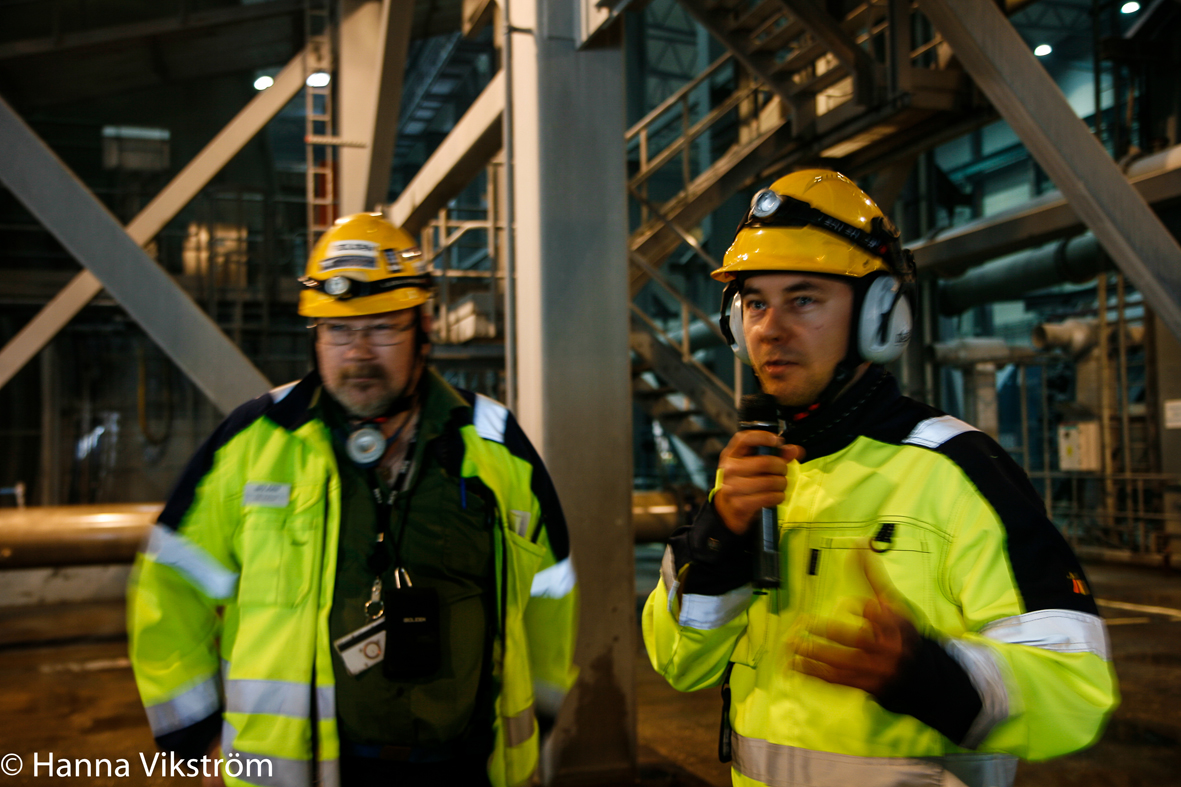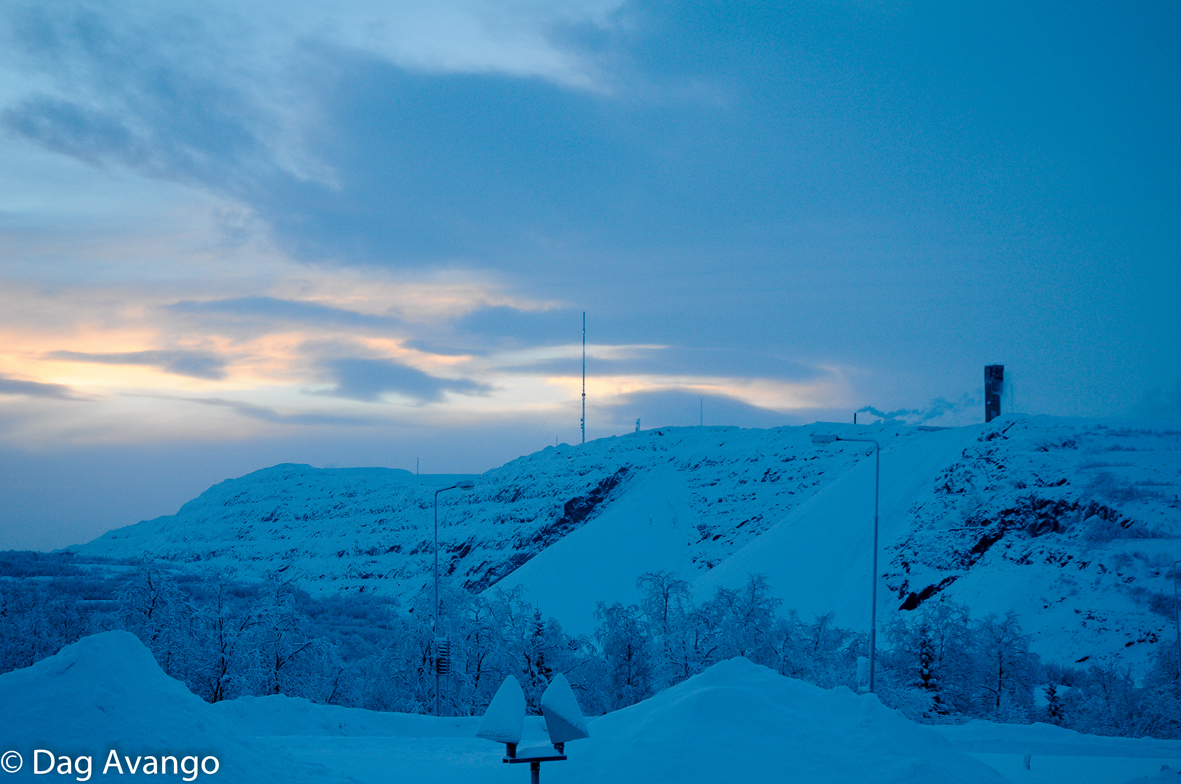SCALMIN 1 – field work at Norrbottens malmfält
SCALMIN 1 is the acronym for fieldwork conducted in Norrbotten, Sapmi, in northern Sweden as part of the research project "Sustainable Communities and the Legacies of Mining in the Nordic Arctic".
SCALMIN 1 was conducted by members of the research project in 2014 and 2015. In this phase we focused our research on Norrbottens malmfält – specifically on Kiruna, Gällivare, and Pajala. We made several site visits in different mining areas in these municipalities and conducted a number of semi-structured interviews with representatives of different organizations that deal with the legacies of mining. In preparation for the interviews we held two workshops together with researchers in the MASD program – one in Umeå and one in Stockholm – during which we defined interview questions and methodologies.
The fieldwork was divided into four campaigns. The first was conducted during week 26, June 2014, in collaboration with the KTH course Environment and Society in a Changing Arctic. During this week we conducted a comprehensive GIS supported photo documentation of mining landscapes as well as buildings and infrastructures pertaining to the history of mining within the Kiruna, Malmberget and Gällivare municipalities, with a focus on Kiruna. Visits were also made at several museums and visitors centers, in which different actors narrate the history of Kiruna and Malmberget. This work was carried out by Dag Avango and Hanna Vikström (both KTH), and Anna Stenport (University of Illinois at Urbana-Champaign).

The second step we conducted during week 3 in January 2015, when Dag Avango and Peder Roberts (both KTH), Olle Stjernström and Joakim Byström (both University of Umeå, working in cooperation with Dieter Müller) conducted interviews with an extensive list of stakeholders. This included representatives of LKAB, the Kiruna municipality, the Laevas Sami village, independent tourism operators, heritage and settlement planning consultancies, and local historical societies. The initially planned interview work was extended to include Göran Cars – directing leader of the move of Kiruna – and also the office of the Swedish master of mines.

The third fieldwork campaign we conducted at Pajala in March 2015, in conjunction with a MASD workshop. Dag Avango, Peder Roberts, Olle Stjernström and Joakim Byström conducted several site visits – to the abandoned mine at Kaunisvaara formerly operated by Northland Resources, to infrastructures built to support this mining operation, and to the historical remains of previous mining operations at Pajala (the Kengis ironworks). The group also conducted interviews with representatives of Northland Resources, the municipality, and residents of Pajala and the Muonio Sami village. Additional interviews were conducted in Luleå, the regional capital of Norrbotten, with representatives of the Norrbotten museum, the county administrative board and the energy company Vattenfall.
The fourth fieldwork campaign we organized in conjunction with the KTH course Environment and Society in a Changing Arctic in June 2015. During two weeks Dag Avango, Hanna Vikström, and Anna Stenport documented mining landscapes as well as landscapes affected by mining related hydropower stations at Kiruna, Svappavaara, Gälllivare (Aitik and Malmberget) and at Porjus and Stora Sjöfallet. The group also documented and analyzed exhibitions and visitors centers at Jokkmokk, Porjus, Stora Sjöfallet and Malmberget and conducted interviews with a number of actors from Sami villages, resource extraction companies and municipalities.

A fifth round of related site documentations and interviews will be conducted in northern Fennoscandia from October 2015 to June 2016 (Kirkenes and Kiruna, Gällivare and Pajala municipalities).
As we conducted the Norrbottens malmfält phase of this project, the world market prices for iron and other base metal ores started to fall, which opened up a much more concrete discussion on post-mining futures from what we had expected when we first envisioned the project in late 2013. The downturn also affirmed the importance we attached to community continuity in our original proposal, and to the particular question of how decisions taken in the present with long-term consequences – such as the move of Kiruna city center – are commitments of a political as well as an economic nature. It was in order to explore the dynamics of this, that we decided to conduct additional interviews with leading figures in the Kiruna move, such as Göran Cars (Professor of Urban and Regional Studies at KTH, currently seconded to Kiruna municipality), and to extend the original scope of SCALMIN 1 to include field research also in the Gällivare and Pajala municipalities. The latter choice has proven particularly fortunate given the significant – and well-publicized – consequences of Northland Resources suspending its operations at Kaunisvaara. The Pajala case reveals how rapidly conceptions of the long-term benefits of mining can change, and how the value of the material remains of mining shift as different actors re-formulate their visions of the future.
In the spring of 2016 additional fieldwork will be conducted in this region in conjunction with workshops in the MASD program and field education run by KTH.

